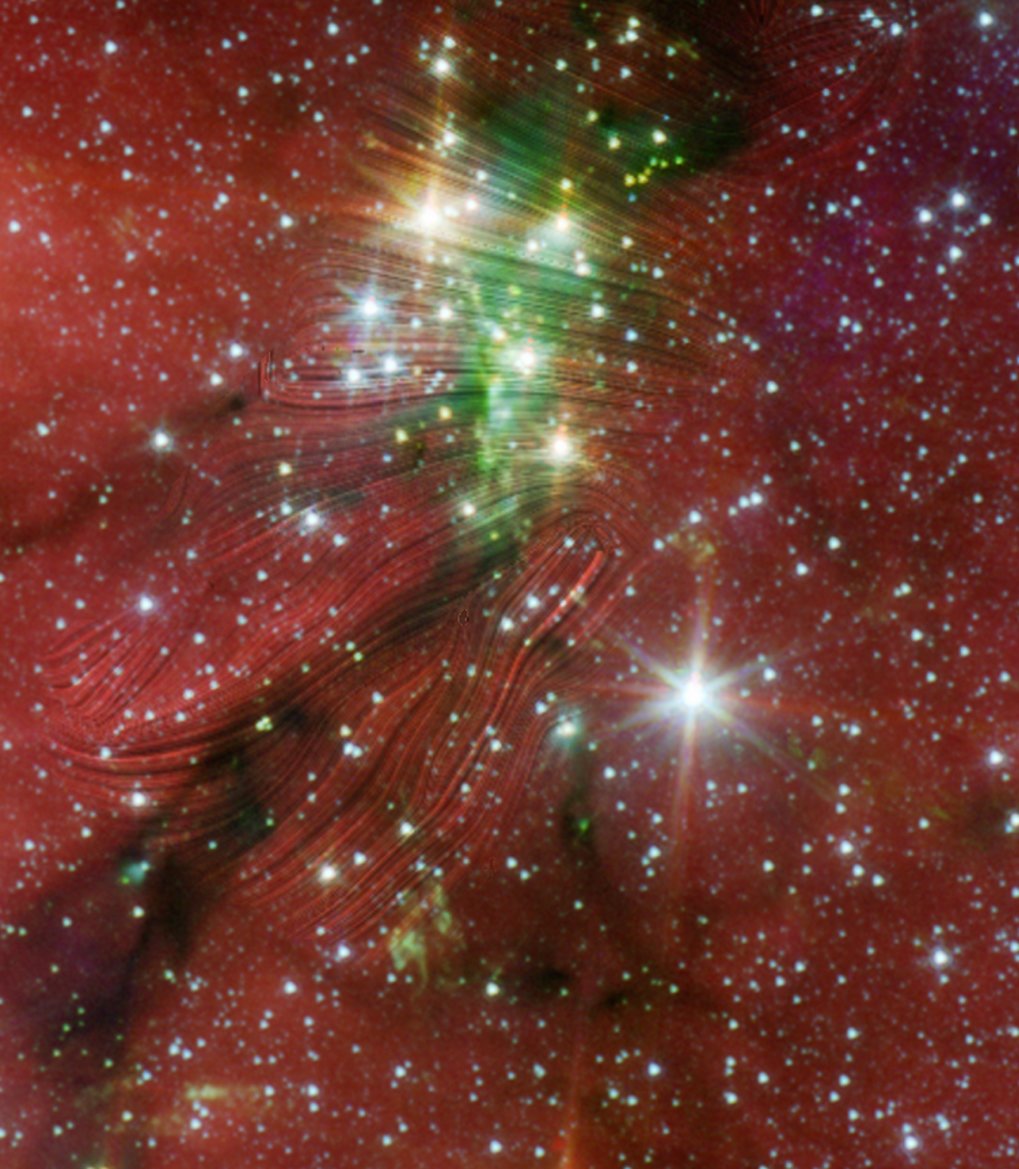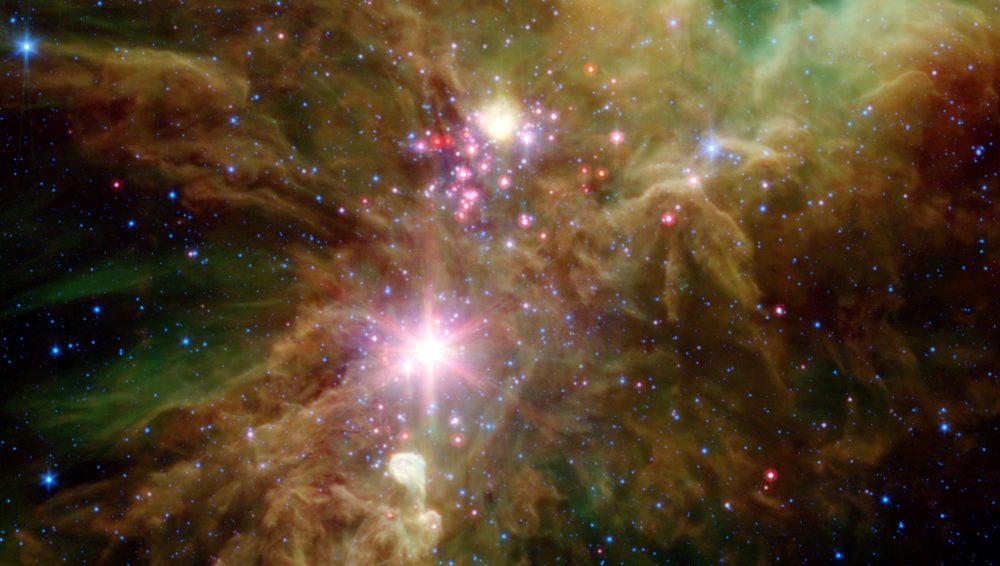Max Planck Institute for Radio Astronomy | 2020 Aug 18
Polarimetric observations with SOFIA/HAWC+ show the orientation of magnetic field lines
Observations of magnetic fields in interstellar clouds made of gas and dust indicate that these clouds are strongly magnetized, and that magnetic fields influence the formation of stars within them. A key observation is that the orientation of their internal structure is closely related to that of the magnetic field.
- Composite image of the Serpens South Cluster. Magnetic fields observed by SOFIA are shown as streamlines over an image from the Spitzer Space Telescope. SOFIA indicate that gravity can overcome some of the strong magnetic fields to deliver material needed for new stars. The magnetic fields have been dragged into alignment with the most powerful flows, as seen in the lower left where the streamlines are following the direction of the narrow, dark filament. This is accelerating the flow of material from interstellar space into the cloud, and fueling the collapse needed to spark star formation. © NASA/SOFIA/T. Pillai/J. Kauffmann; NASA/JPL-Caltech/L. Allen
To understand the role of magnetic fields, an international research team ... observed the filamentary network of the dense gas surrounding a young star cluster in the solar neighboorhood, with the HAWC+ polarimeter on the airborne observatory SOFIA at infrared wavelengths. Their research shows that not all dense filaments are created equal. In some of the filaments the magnetic field succumbs to the flow of matter and is pulled into alignment with the filament. Gravitational force takes over in the denser parts of some filaments and the resulting weakly magnetized gas flow can feed the growth of young stellar clusters like a conveyor belt.
The interstellar medium is composed of tenuous gas and dust that fills the vast amount of emptiness between stars. Stretching across the Galaxy, this rather diffuse material happens to be a significant mass reservoir in Galaxies. An important component of this interstellar gas are the cold and dense molecular clouds which hold most of their mass in the form of molecular hydrogen. A major finding in the last decade has been that extensive network of filaments permeate every molecular cloud. A picture has emerged that stars like our own sun form preferentially in dense clusters at the intersection of filaments.
The researchers observed the filamentary network of dense gas around the Serpens South Cluster with HAWC+, a polarization-sensitive detector onboard the airborne observatory SOFIA, in order to understand the role of magnetic fields. Located about 1,400 light-years away from us, the Serpens South cluster is the youngest known cluster in the local neighborhood at the center of a network of dense filament. ...
Magnetized Filamentary Gas Flows Feeding the Young
Embedded Cluster in Serpens South ~ Thushara G.S. Pillai et al
- Nature Astronomy (online 17 Aug 2020) DOI: 10.1038/s41550-020-1172-6

